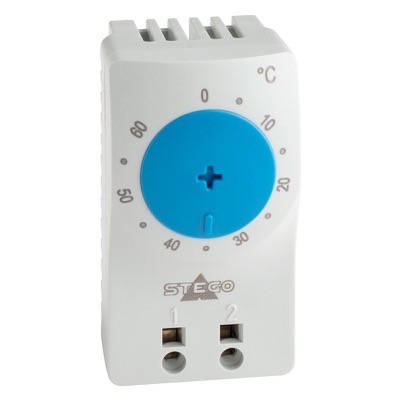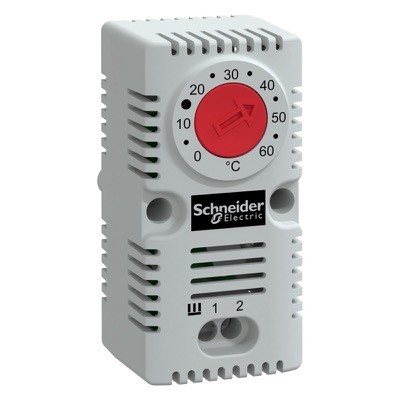What are Thermostats, Hygrostats & Hygrotherms ?
Electrical enclosures shield delicate components from environmental threats. Temperature and humidity are key factors impacting their performance and longevity. Traditional methods often address only one of these, but thermostats and hygrostats work together to create a stable and controlled climate within the enclosure.
Thermostats constantly monitor enclosure temperature and automatically adjust connected equipment, like heaters or filter fans, to maintain a preset level. This precise control offers several advantages: preventing overheating, optimising performance, and protecting against thermal expansion.
Hygrostats function similarly to thermostats, but their focus is on humidity control. They continuously monitor relative humidity and adjust equipment like dehumidifiers or heaters to achieve the desired range. This control offers vital benefits: preventing condensation, mitigating component degradation, and preventing insulation breakdown.
While thermostats and hygrostats are effective tools for individual temperature and humidity control, there's a more integrated solution that combines the best of both worlds: hygrotherms.
Hygrotherms, a combination of both thermostat and hygrostat, offer a more integrated solution for environments requiring precise control over both temperature and humidity. By combining the functions of both devices into a single device, hygrotherms provide a more efficient, coordinated and precise approach to maintaining optimal conditions.
Choosing the Right Control for Your Enclosure
Choosing the right controls for an enclosure depends on several factors. The enclosure's size and complexity determine the capacity and control features required from a thermostat, hygrostat or hygrotherm. The sensitivity of the equipment housed within, to temperature and humidity variations, dictates the necessary control accuracy. Finally, ambient temperature, potential for extreme fluctuations, and dust levels should all be considered when choosing either a thermostats, hygrostats or hygrostat.
In many cases, temperature and humidity are interconnected. For example, maintaining a cool environment might also require controlling humidity to prevent condensation. Dehumidifiers used for humidity control might generate heat, requiring a thermostat to prevent overheating. A hygrotherm can effectively manage both aspects in such scenarios, maintaining the ideal climate for sensitive equipment within enclosures.
By understanding the individual and combined roles of thermostats, hygrostats and hygrotherms, you can create a controlled and stable environment for sensitive equipment within enclosures, ensuring optimal performance, longevity, and reliability.

